Decorating and furnishing with a conscience
In order to pursue our CSR goals, encompassed by The Good Living Project, we are implementing actions based on 4 strategic pillars and 10 improvement levers.
To make the right choices and optimise our 20,000 products, we need clear, reliable and accessible data.
In 2020, we came up with The Good Living Score: a tool to measure and rate the environmental and societal impacts of our products. For 4 years, we took the time and care to develop our own methodology to ensure its reliability at the time of launch.
To take our plan to the next level, we turned to AFNOR, an independent body, to check the robustness of our calculation methodology. The Good Living Score was assessed on 8 specific points, including the rating system, the collection and consolidation of source data, the technical and human resources deployed, and the overarching continuous improvement approach.
The Good Living Score is intended to be reliable, transparent and useful, helping us to develop products that are more respectful of the planet and enabling everyone – distributors and consumers alike – to choose their products with a clear conscience and full knowledge of the facts.

In practical terms, how does the Good Living Score work?
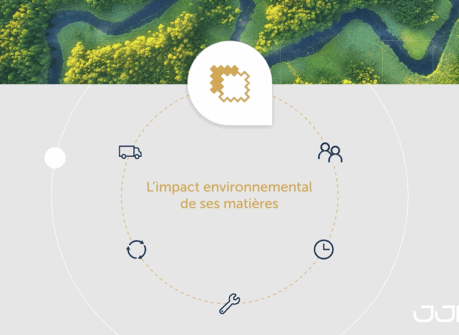
The Good Living Score measures the environmental and societal impacts of a product and ranks it on 5 levels, the 1st being “VERY LOW IMPACT” to “STRONG IMPACT”. This system allows us to assess our alignment with the principles of eco-social design.
To be deemed an eco-social design, a product must have a "VERY LOW" or "LOW" impact. Mode of transport, weight impact, choice of materials, official certifications, number of spare parts, lifespan, recyclability, working conditions… These are all parameters taken into account in our ranking formula.
JJA’s approach is unique because it notably relies on environmental accounting. We converted the weights of the materials that make up our products or the distances traveled for transportation into 6 environmental impacts (CO2, air pollution, water pollution, etc.), using euros as the common unit, based on public or semi-public databases.
Our classification method
Our approach is based on the different phases of the product life cycle and the value chain, assessed according to 6 categories:
The environmental impacts of transport
The environmental impacts of the products
The potential durability of the products
The repairability of the products
The recyclability of the products
The product manufacturing conditions
Our calculation formula
Our in-house formula, for which a patent has been filed, positions each product on a scale to establish its eco-social design ranking.
The formula yields a result corresponding to the cost of the product's environmental and societal impact; this is known as environmental accounting.
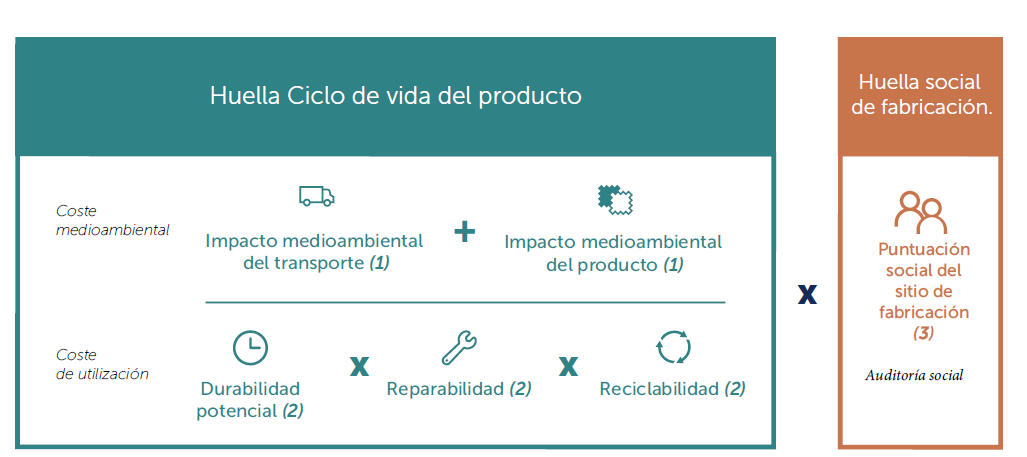
(2) Environmental aspects
(3) Social audit results
How should the results be interpreted?
The top rating, "VERY LOW IMPACT", implies that the product has a very low environmental impact and a positive societal impact.
Good to know : The impact of a product may be classified as "STRONG" because of its weight, for which the coefficient plays a significant role in our formula, and yet have a positive societal impact.

What parameters are taken into account?
Each of the 6 categories groups together a number of parameters that, depending on their classification,
are assessed according to their environmental or social impacts.
- Transportation impacts
- Product impact
- Potential durability
- Distribution
- Recyclability
- Manufacturing conditions
-
Transportation impacts
Calculation of the environmental impact of transporting the product from its place of production to one of our Easy Logistique warehouses, taking into account:
- The mode(s) of transport (lorry and/or sea)
- The distance in km between the production site and the delivery warehouse
- The product weight
For the "modes of transport" and "distance in km" parameters, we take into account the following environmental impacts:
- Climate change due to greenhouse gas emissions
- Air pollution as a cause of human health problems
- Water pollution as a cause of human health problems
- Land use and biodiversity, leading to a loss of ecosystem services
- Waste that causes issues for local residents and can lead to soil pollution
- Water consumption, which can lead to problems in terms of access to drinking water and depletion of resources

* Proven usage cost: whose elements are measurable and recognized as true
-
Product impact
Calculation of the environmental impact of the materials used in the product.
This calculation is based on the 300 materials used by JJA – the source of the data for this evaluation is the Goodwill Management* table.
It's worth noting that some certified materials have a product bonus that improves the score:
- FSC® certified materials
- RSPO label
- GRS® Label
- Oeko-Tex Standard 100
For the "modes of transport" and "distance in km" parameters, we take into account the following environmental impacts:
- Climate change due to greenhouse gas emissions.
- Air pollution as a cause of human health problems.
- Water pollution as a cause of human health problems.
- Land use and biodiversity, leading to a loss of ecosystem services.
- Waste that causes issues for local residents and can lead to soil pollution.
- Water consumption, which can lead to problems in terms of access to drinking water and depletion of resources.

*Proven usage impact: whose elements are measurable and recognised as true.
-
Potential durability
Calculation of the duration of use of the products based on normal use and the products not requiring replacement by the consumer.
This is the length of time for which the product maintains its primary function. A specific table for the Good Living Score was created with JJA's Quality Department.
The longer the period of use, the better the rating.
These potential lifespans vary from less than a month (a candle, for example) to 10 years (a pergola, for example).

*Potential usage impact: whose elements have possible characteristics. Potential durability is not tied to the warranty
-
Distribution
Calculation of the product reparability index based on the number of spare parts available.
The more spare parts there are for the product, the higher the index.
We have identified 3 levels:

*Potential usage impact: whose elements have possible characteristics.
-
Recyclability
Calculation of the possibility of recycling a product in the current technical and economic context, based on the sorting, recycling and recovery technologies available in France.

*Potential usage impact: whose elements have possible characteristics.
-
Manufacturing conditions
Product manufacturing conditions are assessed through social audits of the factories in which the products are manufactured.
Since 2014, JJA has been a member of the amfori association, which has drawn up a social audit reference framework incorporating 13 themes:
- Social management system and cascade effect
- The rights of freedom of association and collective bargaining
- No discrimination, violence or harassment
- Fair remuneration
- Occupational health and safety
- Worker involvement and protection
- Ethical business behaviour
- Decent working hours
- No child labour
- Special protection for young workers
- No precarious employment
- No bonded, forced labour or human trafficking
- Protection of the environment

*Proven usage impact: whose elements are measurable and recognised as true.
Does the Good Living Score take into account the product's life cycle?
The Good Living Score integrates the principles of eco-social design.
To ensure a high level of precision, detail and reliability in The Good Living Score, we had to make some compromises. Some data is therefore currently unavailable, but will be provided in the future.
As part of our continuous improvement process, the Good Living Score is sure to evolve. The Good Living Score is bound to evolve.
Eco-socio-design cycle
- Innovative design
- Raw materials extraction
- Manufacturing
- Transport
- Use
- End of life
-
Innovative design
Already taken into account:
- Choice of materials: renewable, recycled, reclaimed, recyclable
- Material optimization: quantity of material
-
Raw materials extraction
Already taken into account:
- Choice of materials: renewable, recycled, reclaimed, recyclable ;
- Material optimization: quantity of material
-
Manufacturing
Already taken into account:
- working conditions at production sites
Future integrations:
- materials related to the manufacturing process (e.g. paint, treatments, etc.);
- environmental management of manufacturing sites (environmental audits, energy management, etc.)
-
Transport
Already taken into account:
low-impact transport ;
local sourcing
-
Use
Already taken into account:
- durability (improved product life, quality, ease of maintenance) ;
- change behaviour and encourage lower-impact consumption;
- reparability (improving spare parts availability)
Future integrations:
- reduce the need for energy, water and materials during use ;
- repairability (revised criterion) ;
- performance product quality
-
End of life
Already taken into account:
- Recycling ;
- Monitoring EPR channels (eco-participation)
Future integrations:
- easy disassembly ;
- component reuse ;
- circular economy (second-hand and products with minor defects) ;
- eco-participation (valued in the formula)
For a more in-depth understanding, let's analyse the Good Living Score of some products
Good to know: An overall "MODERATE", "SIGNIFICANT" or "STRONG" impact does not prevent our products from guaranteeing certain commitments.
As seen in our examples, this may be due to the product weight.
If, despite our best efforts, it proves impossible to optimise a product classified as "STRONG IMPACT", it may be withdrawn from the market.
-
ACORDIA stacking garden armchair (ref. 196837)
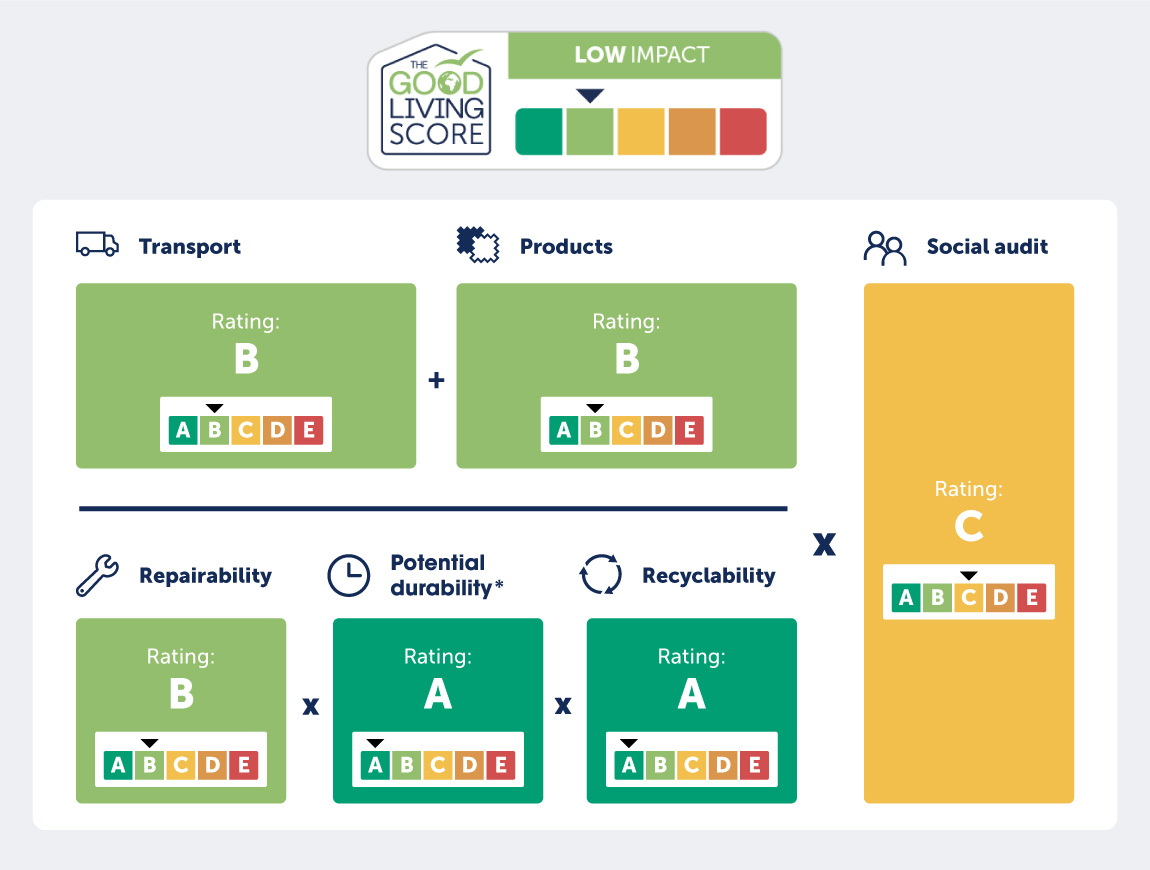
Rating insights:
- This is a lightweight product with a very low environmental impact, 29% of which is attributed to transport and 71% to the product
- Product bonus as the wood is FSC® certified
- Its estimated lifespan is 10 years.
- The chair can be repaired
- Very high recyclability
- Working conditions: Very good
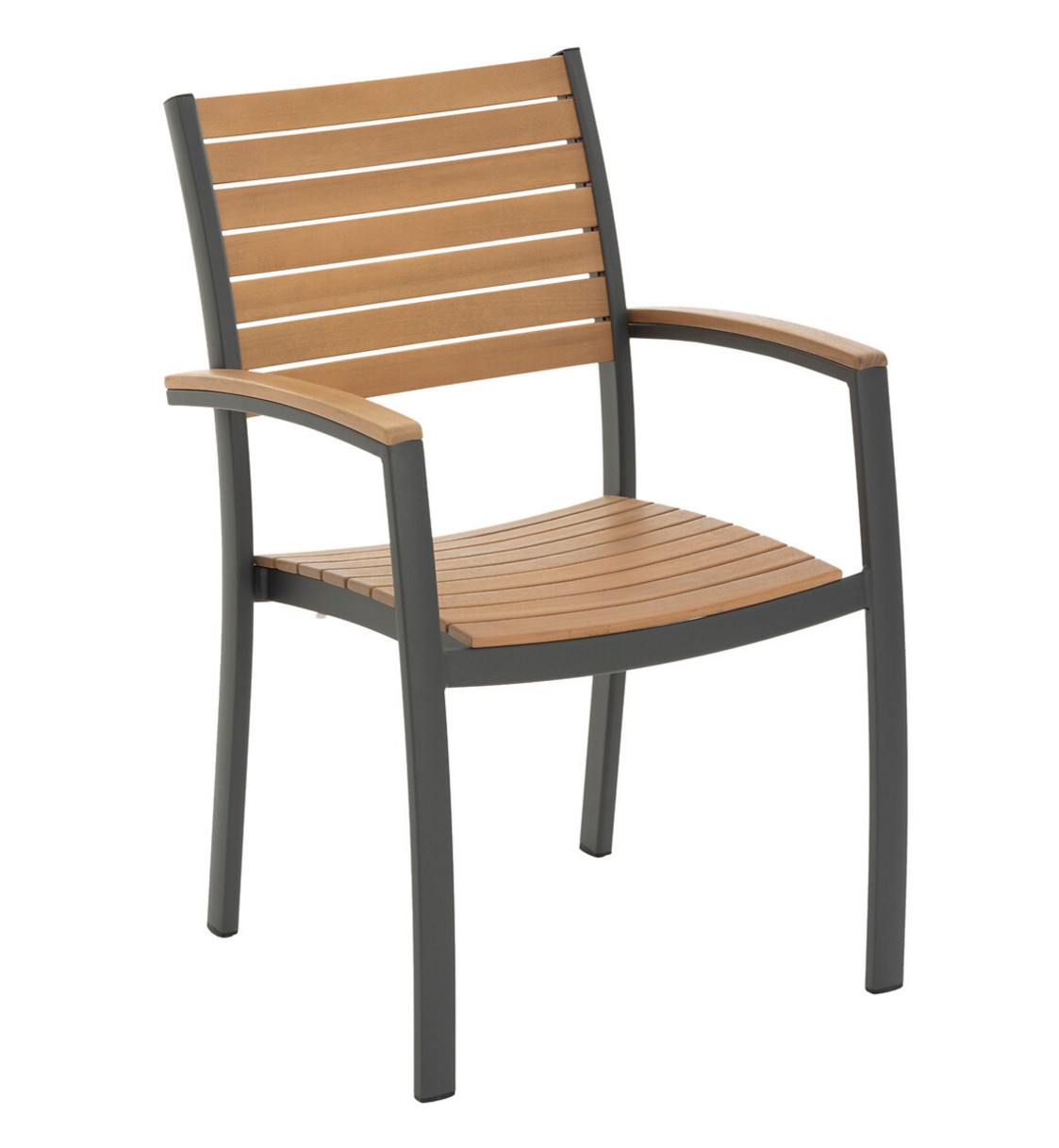
-
BAYA chair (ref. 157166B)

Rating insights:
- This is a lightweight product with a very low environmental impact, 29% of which is attributed to transport and 71% to the product
- Product bonus as the wood is FSC® certified
- Its estimated lifespan is 10 years.
- The chair can be repaired
- It can be recycled.
- Working conditions: Very good
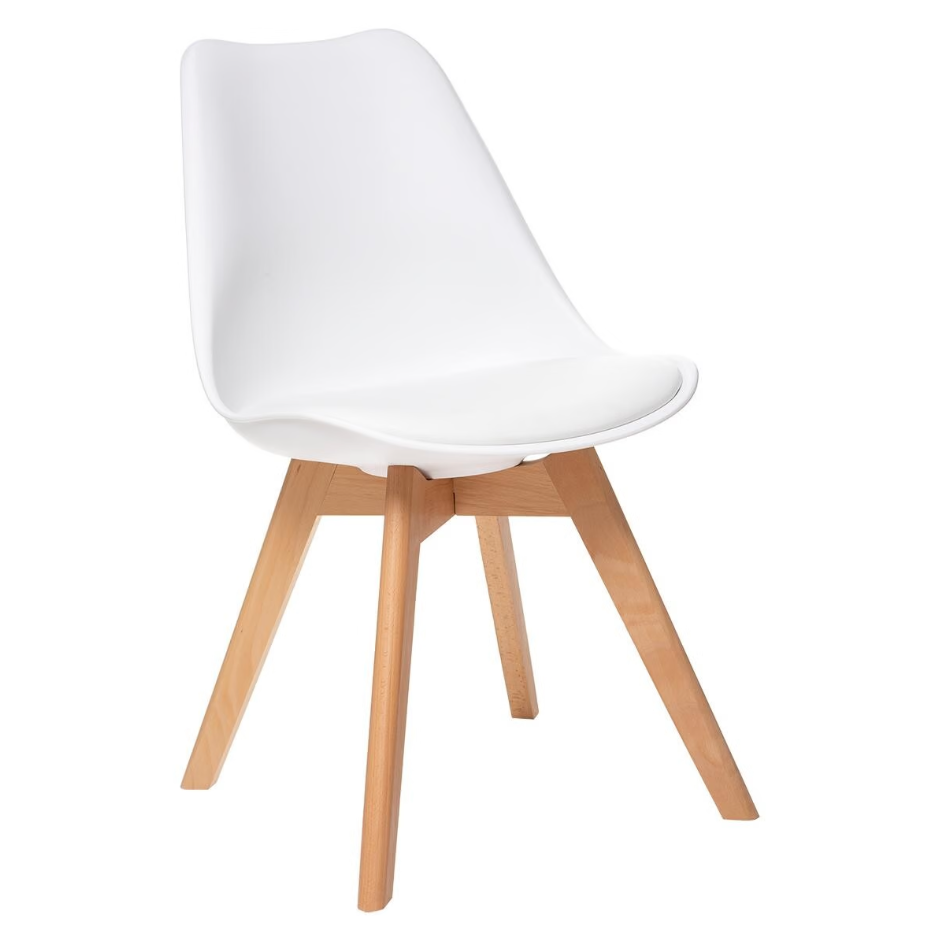
-
PIAZZA armchair (ref. 139828)
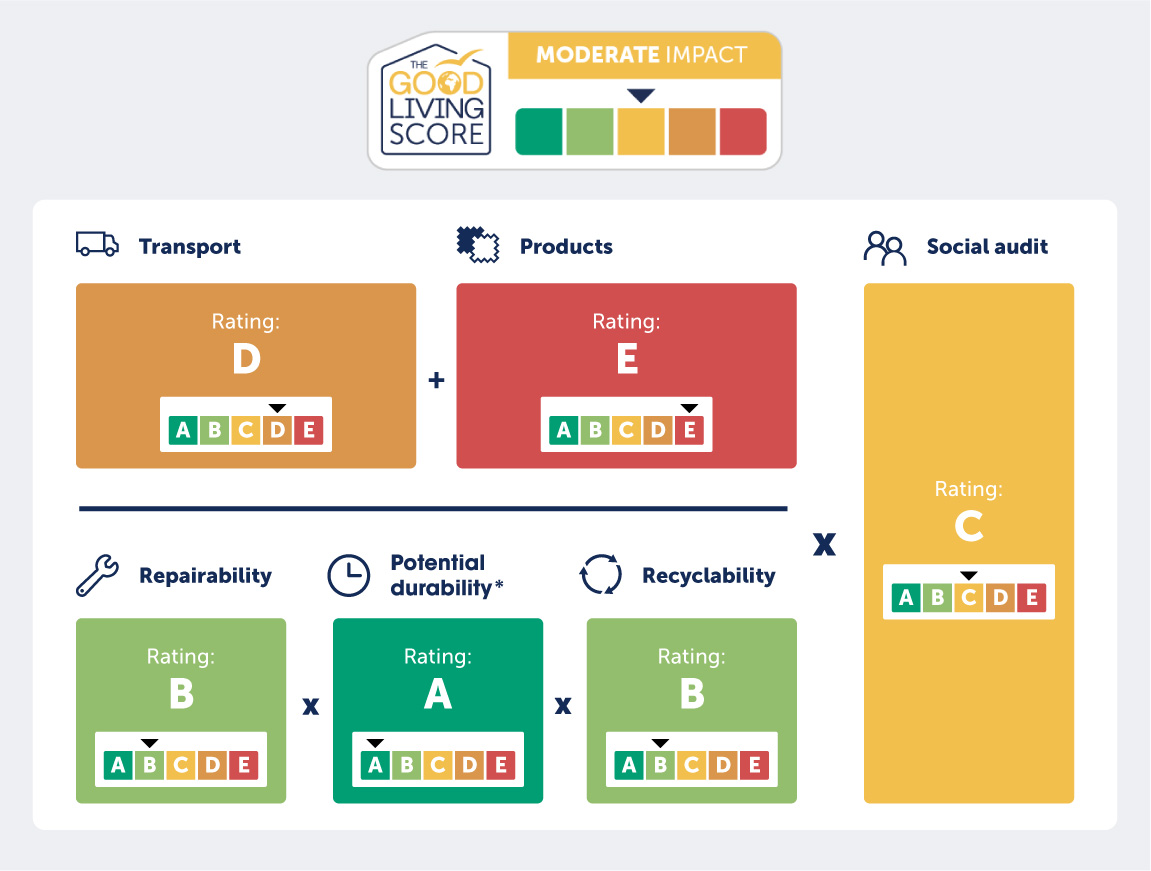
Rating insights:
- This is a heavy product with a high environmental impact, of which 3% is attributed to transport and 97% to the product.
- Its estimated lifespan is 10 years.
- The chair can be repaired because it has spare parts.
- It can be recycled.
- Working conditions: Acceptable
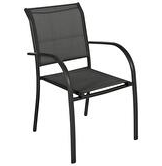
-
COLVA 2-door TV stand (ref. 184924)
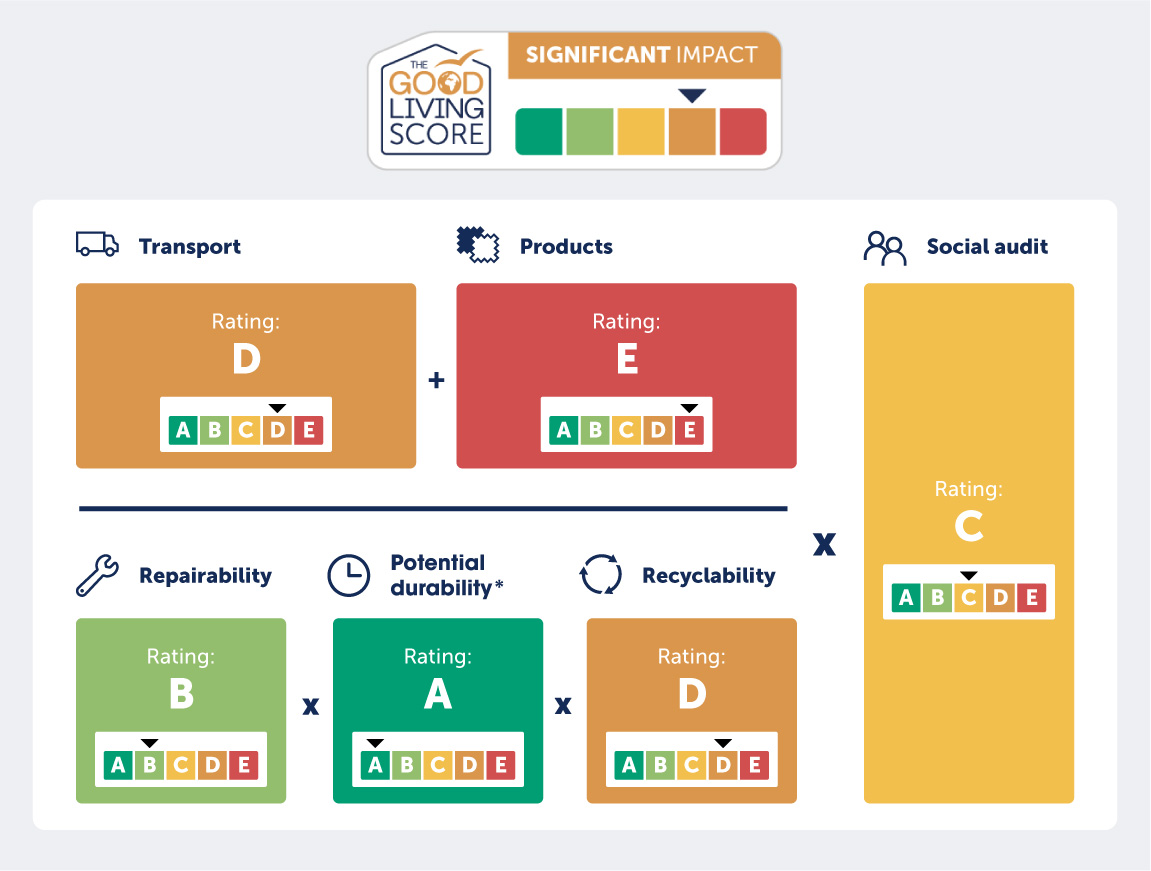
Rating insights:
- This is a heavy product with a very low environmental impact, of which 19% is attributed to transport and 81% to the product.
- Its estimated lifespan is 10 years.
- It is repairable because it has spare parts available
- It cannot be recycled
- Working conditions: Acceptable
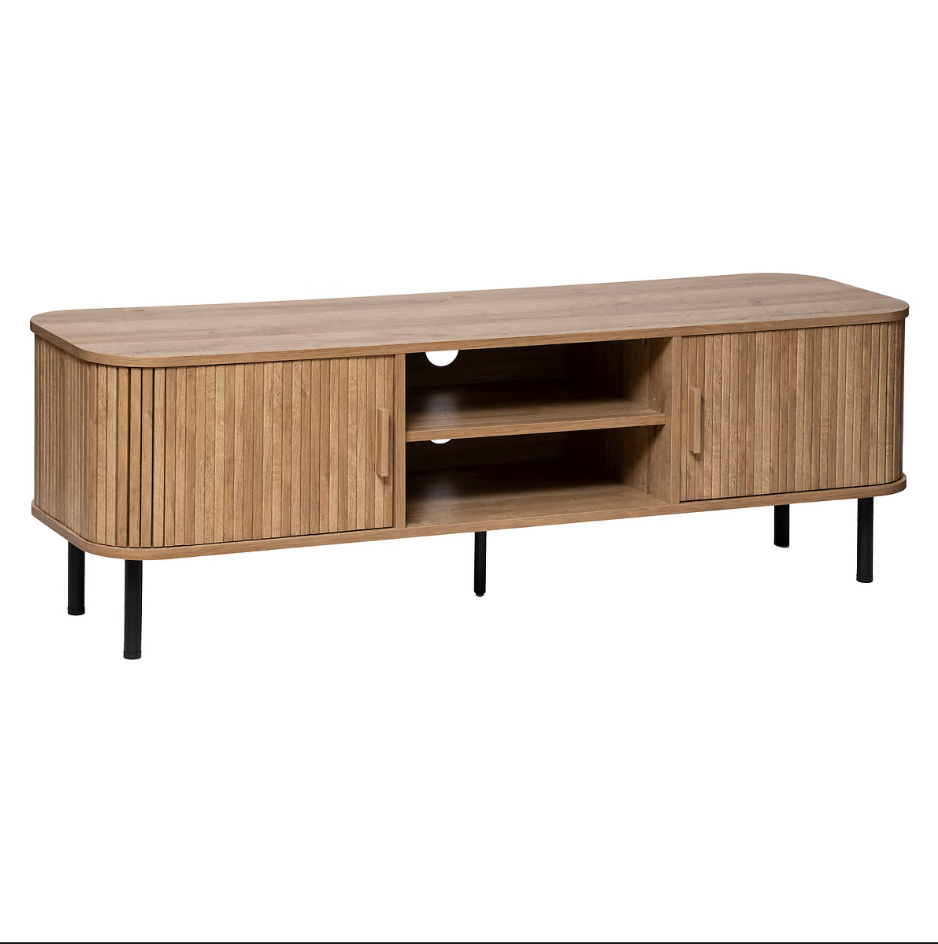
Can the Good Living Score evolve?
Continuous improvement is at the heart of the JJA Group’s DNA and our The Good Living Project approach.
Taking these many parameters into account in the Good Living Score allows us to precisely identify areas for improvement and do everything possible to improve the eco-social design of products with a "SIGNIFICANT" or "STRONG" impact.
For example, we can take action by changing a product's composition or geographical origin, or by extending its lifespan.
And going forward?
With over 200 million products distributed every year, we are keenly aware of our impact on the world, but we believe that every improvement we make will have a major positive impact.
Our Offer teams strive to improve the rating of our products every season, working closely with all JJA departments and our value chain stakeholders (our service providers, suppliers and transporters).
To this end, we provide buyers with a Good Living Score simulator, training and eco-design support, and we always share our requirements when choosing suppliers.

Through concrete actions, the JJA Group takes part in The Good Living Project to reduce our social and environmental impacts.


